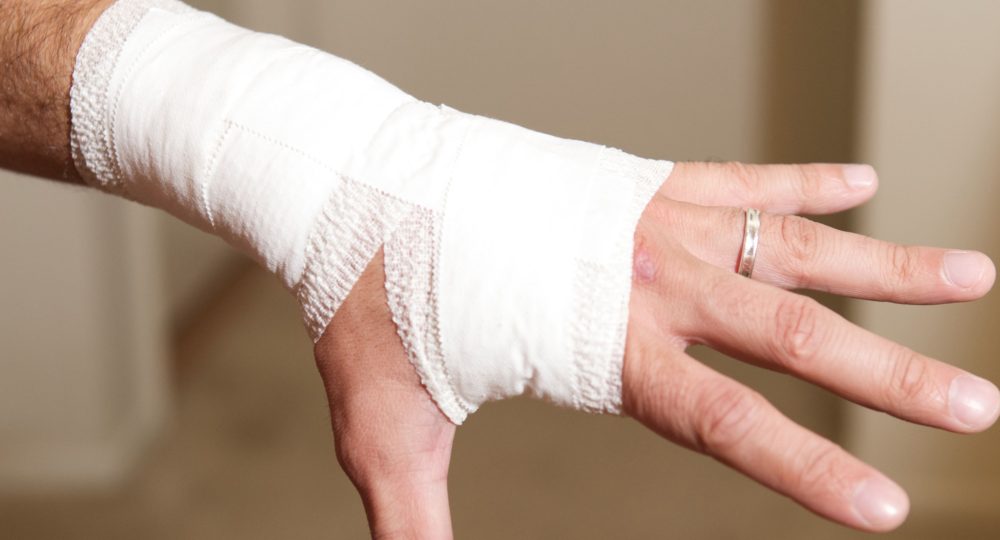Types Of Athletic Tape

When it comes to athletic tape, there are many different varieties to be aware of. However, while there are a large number of individual types of tapes, they loosely fall into a few main categories: corrective, supportive, and compressive. The benefits to each type of tape vary, depending on the intended use, and generally have different properties that allow them to perform different functions. We say loosely because some types of tapes can be used in other categories for similar benefits, but they are generally best used for their individual category.
Tapes are very particular and must be applied correctly to achieve the associated benefits. Talk to a physical therapist or personal trainer to understand which tape might be the most useful for you, and techniques on the proper application of each type of tape.
Corrective Tapes
These types of tape are usually used to assist in correcting an aggravated issue or injury. These are largely used for muscles and, on occasion, bones.
- Kinesiology Tape: A cloth-based flexible tape that adjusts to the skin as you move. It is commonly used by athletes to help develop muscle support in many desired areas, and can be used in many different places on the body. While it may provide some support on its own, the greatest strength of kinesiology tape is in the tensile cues it gives to your brain, to allow it to adjust on its own and develop supportive habits for various muscle groups.
- Leukotape + Coverall: Latex-free inelastic tapes are used in conjunction to help correct joint positions, pulling two bones back into correct alignment. Coverall is applied first to areas that might be affected by the zinc oxide adhesive of the leukotape, which is then applied on top. Due to the strength and general use for this variety of tape, it is usually only commonly used by professional health care practitioners.
Supportive Tapes
These tapes are applied to any joint areas that require additional support during an extended activity, and are commonly applied to ankles, hands, fingers and wrists.
- Athletic/Sport Tape: This is the most commonly used tape in the sport world, known for its strong, inelastic hold. It comes in varying widths and is generally used to limit the movement of the targeted joint for the duration of a single athletic activity to allow the athlete to perform while maintaining needed support.
- Elastikon/Elastoplast: Both of these tapes are highly twisted cloth or yarn tapes with cotton construction and rubber-based adhesives. These are the other varieties of “strong tapes,” which are commonly used to provide maximum support to knees, elbows, shoulders and ankles, and should be removed on the same day it is applied.
- Wet Proof: This relatively flexible tape is waterproof and washable, and is uniquely able to apply to the body, even if the area is wet. This tape is generally useful for swimmers who are already in the water, or if the athlete is already sweating profusely. It is considered a skin friendly tape that is ideal for hypersensitivity or skin allergies.
Compression Tapes
This type of tape is similar to supportive tape, but does not hold as strongly as most supportive tapes. These are good alternatives for strains or sprains when a lighter touch is required. Usually applied around joints like knees, elbows, wrists, hands, and ankles.
- Coban: This tape is self-adhesive, but not to skin. It is usually used over other tapes to ensure they don’t lose their adhesiveness when exposed to dry or sandy conditions. Coban is an excellent tape to provide slight added support and protection when needed.
- Lightplast: Unlike Coban, Lightplast is adhesive to the skin and can be used on its own, providing a light compression to a few important areas of the body. Unlike many supportive tapes, this tape allows for much more joint mobility and only minimally restricts movement when applied.
Taping has a great many benefits, and can be used in a variety of different ways, depending on the tape used. As usual, consulting your physician is the best approach when choosing the appropriate tapes to be used, and how each should be applied.
Remember to be sensible when using tape, as it is not something that can be applied anywhere to fix every problem. Indeed, there are a great many applications in which tape is not the optimal solution, and you should never be using it as a catch-all. Remember that each tape has a certain length of time that is recommended for each product, so be sure to follow the directions associated with each tape to ensure it is right for you. Especially if your tape starts to make you feel numb, tingly or irritated, it’s likely time to take it off.
This is just a quick guide on the most common types of body tape, as there are other types of tape that can be used in more specific situations.
Author’s Bio
Colin Hegarty is a content writer for BreezeMaxWeb that helps businesses showcase their brand through enticing copy. When he’s not working, you can find him playing net in a local beer league or biking around the city.
Leave a reply
You must be logged in to post a comment.







